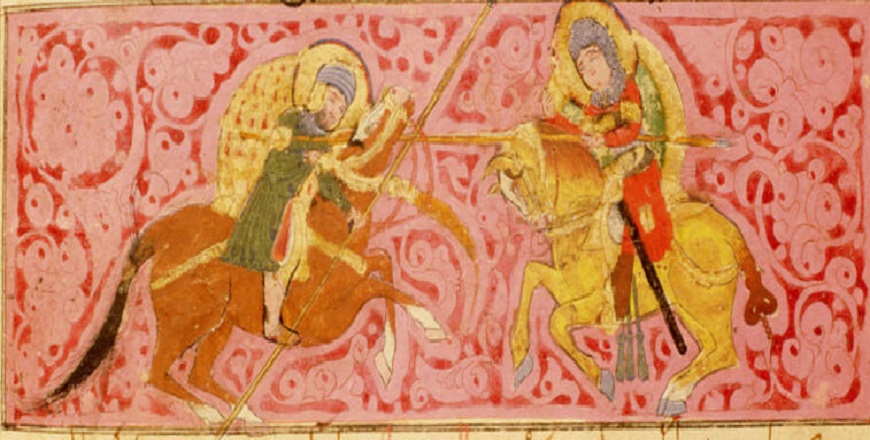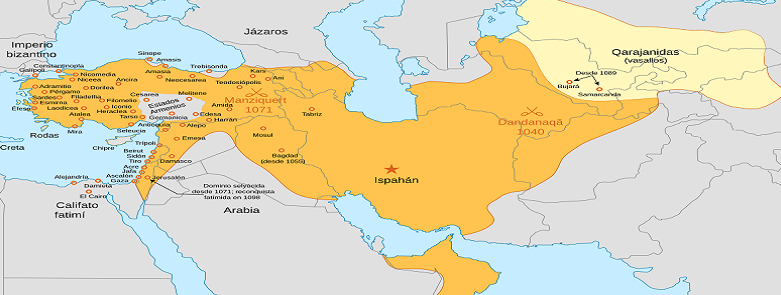

Having moved westward and converted to Islam, the Seljuks first made contact with the Samanids, and later with Mahmud of Ghazna: this did not end well. In the 1030s they moved into Khorasan and made peace with Masud of Ghazna on condition that they would keep the Ghozz under control. But they routed Masud’s army in 1040. The Ghaznavids were thus pushed out of Khorasan, and though they still held on to Ghazna for some time, they were eventually reduced to a local power in western India.
The Seljuk invaders were led by the brothers Toghrol Beg and Chaghri Beg. While the latter remained behind in Khorasan, Toghrol pushed westwards, captured Reyy, which he made his capital, overran the scattered Buyid principalities, entered Baghdad in 1055 and ended Buyid rule in Ira. The caliphate had already lost much of its executive power, first to individual Turkish generals, then to the Buyida, who had captured Baghdad. Thus the caliph conferred the title of sultan on Toghrol, since he was both the dominant ruler of the Abbasid domains and, contrary to the caliph’s previous Buyid overlords, an orthodox Sunni. Until then, apart from the Ghaznavid territories in the east, Shiism had been the dominant power in much of the Muslim Middle East, with Buyid control of Iraq and western Persia, while Egypt and North Africa were in the hands of the Fatemid caliphate.
There has been a good deal of speculation on the implications of the title “Sultan”- which was used by subsequent Turkish rulers as well – for the relationship between the caliphate and sultanate from this time onwards. Some have even interpreted it as a division along church/state or religious lines. It is extremely unlikely that in conferring the title sultan on Toghrol the caliph had anything of the kind in mind. The caliphate does not compare with the Christiane church; the caliph did not have the doctrinal authority of the Pope; and the new sultan’s independent power vis-à-vis the caliph was not very different from that of the Buyids and the Ghaznavids before him.
The Seljuk empire at its peak
In Malekshah’s reign the Seljuk empire reached its apogee both in extent (surpassing even the Sasanian empire), prosperity and glory: the empire stretched from central Asia to the Mediterranean. The administration of the empire was in the hands of Nezam al-Molk, who had posted his twelve sons to various provinces to ensure loyalty and efficiency. From the beginning of the Seljuk conquests the administration of the state was left in the hands of Persians, running a system which was broadly similar to that of the Ghaznavids and earlier periods, being based on “divans”, secretaries, “mostofis” (tax accountants) and the like, a system which in general served the country until the mid-nineteenth century when European influence introduced new forms...Read more
